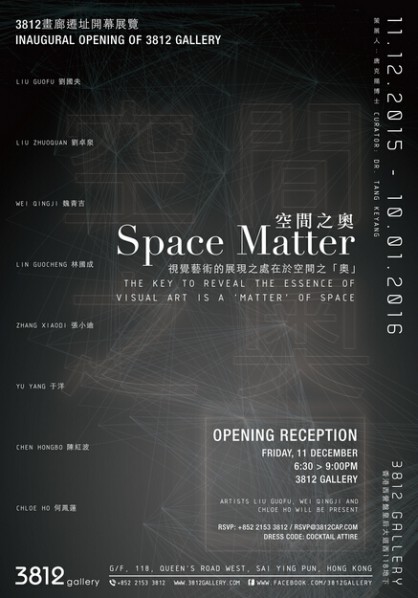
Dr. Tang Keyang has put together a wonderful, thought-provoking show and presented us with the question of ‘space’ in three separate spectrums of meanings. The first being a ‘cultural space’, this invisible place entails a contested overarching knowledge structure. When the space of culture encounters the visible, localisable space which we live in, questions of representations are raised. This leads us to a second space, a space of representations as artists reconstitute objects and places in images of the first space.
The third space is implied but it is one that is the most puzzling (and liberating). That space is ‘us’, or rather, how we construct ourselves based on our understanding of the world around us. Our innate physical limitation dedicates that we are only ever present at one place, at one time. This is behind our spatial misconception that we are (relatively) free to move across space, yet our movement is always constrained by the way these spaces were produced.
We are the locality where the consequences or effects of the two aforementioned spaces translate into our living experience and how we understood ourselves – our identities. It is unsettling to understand that our life are determined and structured by forces in abstract places that cannot be ‘physically grasped’; and that the very language we use for self-expression is subjugated to the conditioning of these ‘invisible’ spaces.
The works chosen here provide us glimpses into these imagery spaces that are otherwise unobtainable via langue.
In Lin Guocheng’s ‘Melancholy Modernity’ (see image below), the omission of ‘depth’ exposes the ‘real’ nature of the two-dimensional space and remind us that the presumed ‘realistic representation’ of three-dimensional world, is in fact created via visual deceptions. Whilst this is a difficult notion to grasp, it illustrates the uneasy, intricate relationships between representation, reality and our own perception.
Or in that of Lin Zhuoquan’s installations, where familiar objects are bottled and reorganised in an estranged context. Not only do his works raise the serious question as to whether we are consuming objects or rather, symbols. His otherworldly encyclopedic composition of worldly objects challenges our very own socially constructed understanding of the world.
Wei Qingji’s whimsical representational ink figures sets him apart from the preoccupation with abstraction amongst other experimental ink artists. However, his message is an equally serious one. As the title ostensibly implies, the viewer’s instant recognition of the figure as a horse is in fact, unwarranted. In simpler language, what is being depicted is not horse, but a representational silhouette of a horse. In our recognition of the misleading nature of our interpretation of what we see, we are offered a fleeting glimpse into the invisible spaces that informed our very own understanding of the world. Wei Qingji’s subversive ink work shows that the abstraction is never in the ‘form’ of an object depicted, but in the invisible spaces hidden behind our thought.
What the artists chosen here have collectively shown is precisely the uneasy relationship amongst the three spaces. In which what we think we see are almost always conditioned by the way these spaces were produced.
3812 is thrilled to be able to conjure a show encompassing works specifically created for this exhibition by Chloe Ho, Liu Zhuoquan, Chen Hongbo, Lin Guocheng, Wei Qingji and Zhang Xiaodi.
About the exhibition
Date: 2015.12.11 Fri - 2016.01.10 Sun
Venue: 3812 London
Address: G/F, 118 Queen’s Road West, Sai Ying Pun, Hong Kong
Courtesy of the artists and 3812 London.




























